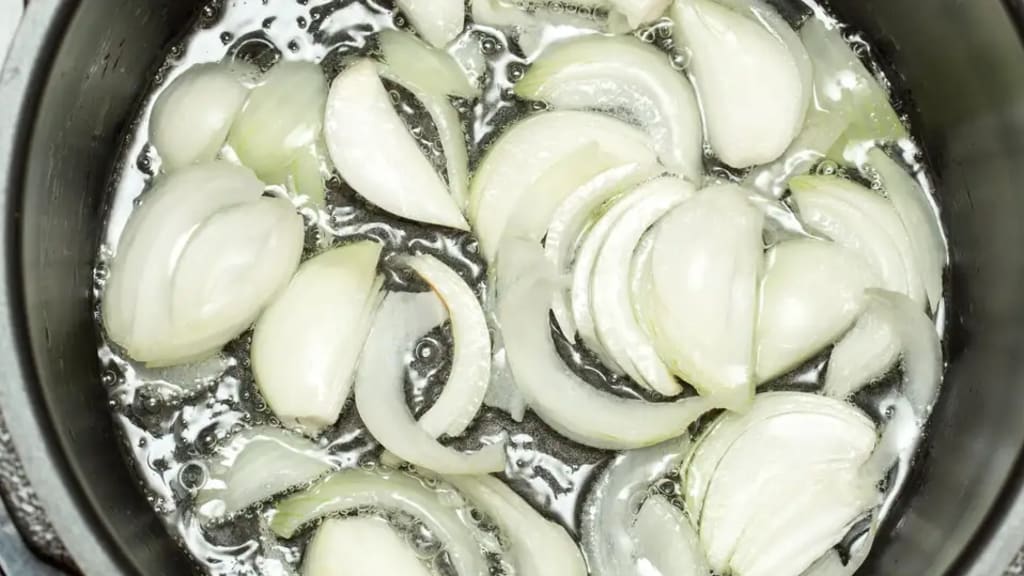
Onions are one of the most versatile and widely used ingredients in the culinary world. They add depth, flavor, and texture to a wide range of dishes, from soups and stews to stir-fries and salads. However, simply adding sliced onions to a dish won't always deliver the best results. To really bring out the flavor of onions, you need to sizzle them.
Sizzling onions refers to cooking the onions over medium heat until they are softened, browned, and caramelized. This process takes time and patience, but the end result is worth it. Caramelized onions have a rich, sweet, and savory flavor that can elevate even the simplest of dishes.
There are a few things you need to keep in mind when sizzling onions. Firstly, it's important to use the right type of onion. Sweet onions, such as Vidalia or Walla Walla, are the best choice for caramelizing. These onions are sweeter and milder than other types of onions, so they'll caramelize more easily and develop a rich, sweet flavor.
Next, you need to slice the onions evenly. This will ensure that the onions cook evenly and prevent some parts from burning while others remain raw. You can slice the onions into thin rounds, or you can cut them into thin strips or half moons.
When it comes to the actual cooking process, it's important to use a heavy-bottomed pan. A cast iron pan works best, but you can also use a stainless steel or non-stick pan. The key is to make sure the pan is heavy enough to distribute heat evenly and prevent the onions from burning.
Once you have your pan heated, add a little bit of oil to the pan and let it heat up. Then, add the sliced onions to the pan. Be sure to spread the onions out evenly in the pan so they cook evenly. You can also add a pinch of salt to help the onions release their moisture and caramelize more quickly.
Now, it's time to let the onions sizzle. This process will take anywhere from 15 to 30 minutes, depending on the amount of onions you're cooking. The key is to stir the onions occasionally, but not too frequently. You want to give the onions time to caramelize and brown, so don't be tempted to stir them constantly. If the onions start to stick to the pan, simply add a splash of water and stir to deglaze the pan.
As the onions cook, you'll notice that they start to soften and turn translucent. Keep cooking until the onions are browned and caramelized. This can take anywhere from 20 to 45 minutes, depending on the amount of onions you're cooking. When the onions are ready, they'll be soft, sweet, and slightly caramelized.
Caramelized onions are incredibly versatile and can be used in a wide range of dishes. They're perfect for topping burgers, sandwiches, and pizzas, or for adding to soups and stews. They can also be used as a base for sauces and dips, or as a filling for omelettes and frittatas.
In addition to their delicious flavor, caramelized onions are also incredibly healthy. Onions are packed with antioxidants, anti-inflammatory compounds, and a range of vitamins and minerals. Caramelizing the onions only enhances these health benefits, as the process releases the antioxidants and enhances the flavor.
In conclusion, sizzling onions is a simple and delicious way to add depth, flavor, and texture to your dishes.
Then you wait.
The onions will slowly start to sizzle, emitting tiny trails of bubbles with but a whisper of noise. It is important that you do not increase the heat; the goal is to slowly, gently cook the onions until they become melt-in-your-mouth soft. You want to be able to spread them with a butter knife. Much like caramelizing onions, you cannot rush this. Just let them sizzle away, until they turn translucent and lose all rigidity in their little cellular walls.
Once they are tender and jammy, fish them out of the pot and plate them up. They make a sweet and satisfying side dish, but they’re also quite at home on a piece of heavily buttered toast with some coarse salt. Once you’ve removed the onions from the oil, filter it—you just made onion oil, which makes an incredible vinaigrette, bread-dipping oil, and egg-frying fat (provided you can afford the eggs).
About the Creator
Enjoyed the story? Support the Creator.
Subscribe for free to receive all their stories in your feed. You could also pledge your support or give them a one-off tip, letting them know you appreciate their work.






Comments
There are no comments for this story
Be the first to respond and start the conversation.